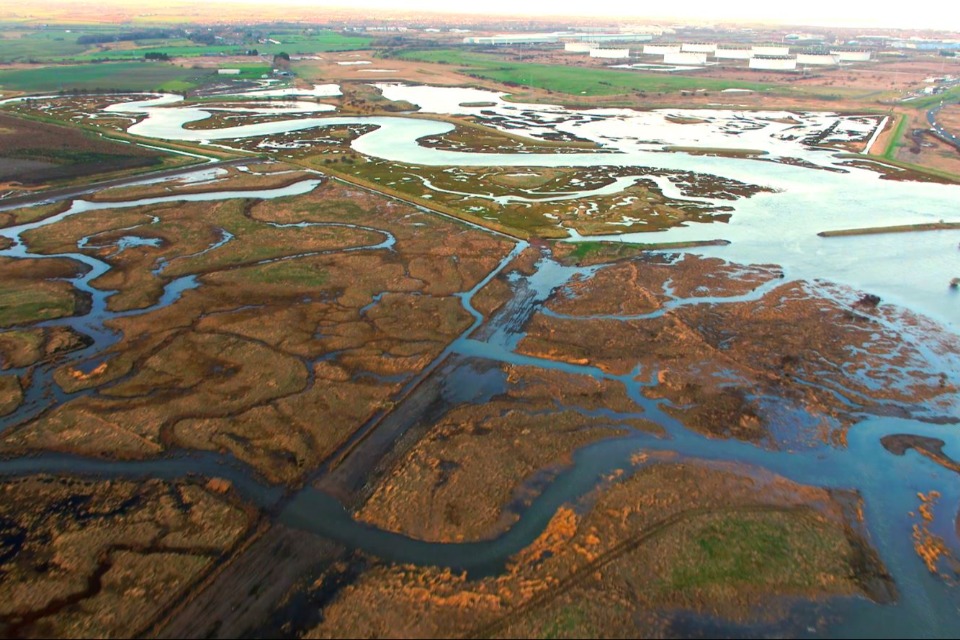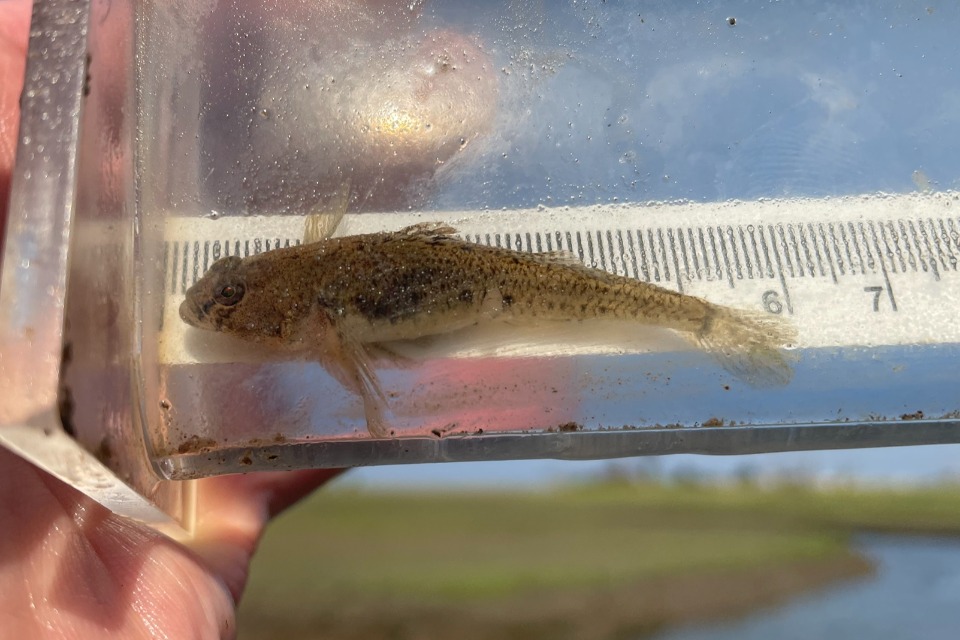Officers from the Environment Agency have carried out surveys at Greatham, Teesside with positive results for local fish populations.
With the help of partners from the Institute of Fisheries Management, officers successfully recorded a number of species living in newly created saltmarsh habitat.
This included flounder, herring, thin-lipped grey mullet, sand smelt, common goby and three-spined stickleback. A healthy number of crabs - over a thousand - as well as shrimps and prawns were also recorded.
The annual ecological monitoring is assessing the impact of the saltmarsh habitat created as part of both Greatham North managed realignment scheme, which was completed 10 years ago, and the £16m Port Clarence and Greatham South Flood Alleviation Scheme, which was launched six years ago.
Last year's survey recorded the highest diversity of species since monitoring began and that was maintained this year, with the thin-lipped grey mullet - discovered there for the first time last year - again present.
The monitoring work is part of Tees Tidelands, a £30m programme of work to realign flood defences, restore mudflat and saltmarsh habitat and remove tidal barriers so migratory fish can return to rivers where they have been absent for hundreds of years.

Greatham South managed realignment.
Positive results
Anthony Crook, Environmental Monitoring Officer for the Environment Agency said:
Each year we're seeing positive results from these surveys as we continue to learn more about these dynamic and highly productive intertidal habitats.
It's a great indication that the work we are doing as part of Tees Tidelands will make a difference for generations to come.
There's still a lot of investigation to do as these sites continue to develop and evolve. We'll continue to carry out ecological monitoring of the sites to look for further improvements as Tees Tidelands progresses.
The lessons learned from the Greatham monitoring will also be used to inform the design of future managed realignment schemes across the UK.
The Tees estuary is one of the most industrialised in the UK and is internationally important for its wildlife. In total, Tees Tidelands aims to create over 50 hectares of mudflats, saltmarsh and other valuable estuarine habitats, as well as reducing flood risk for homes and businesses, now and into the future.

Image shows a goby fish.
Surveys provide 'valuable insight'
Paul Eckersley, Tees Tidelands Project Executive, added:
The saltmarsh fish surveys provide us with valuable insight as we move forward through Tees Tidelands.
It helps us to understand the impact of the work we're doing and how best to bring long-term benefits for people and nature.
Allowing the Tees estuary to realign with its natural tidal cycle will create the correct conditions for wildlife to thrive.
Estuaries, in particular saltmarshes, are extremely productive environments, playing a crucial part in the lifecycle of many fish species. Saltmarsh provides vital nursery habitat for estuarine fish, juveniles forage in amongst the creeks, and the complex habitat also provides cover from predators.
Steve Colclough is from the Institute of Fisheries Management, which provides equipment and expertise for the surveys. They conduct citizen science fish survey programmes across England. He said:
Until recently saltmarshes and managed realignments have been poorly studied across Europe through both cost and lack of expertise.
While ecological post-project appraisal of new managed realignments has been rare to date, each site is unique and evolves over time.
This very successful partnership with the Environment Agency provides a unique opportunity to study this evolution over an extended period. The information gained will then help improve future designs.
What we are starting to understand is that designs which can mimic the natural functions of a saltmarsh as soon as possible will provide the most productive habitats for all wildlife.






